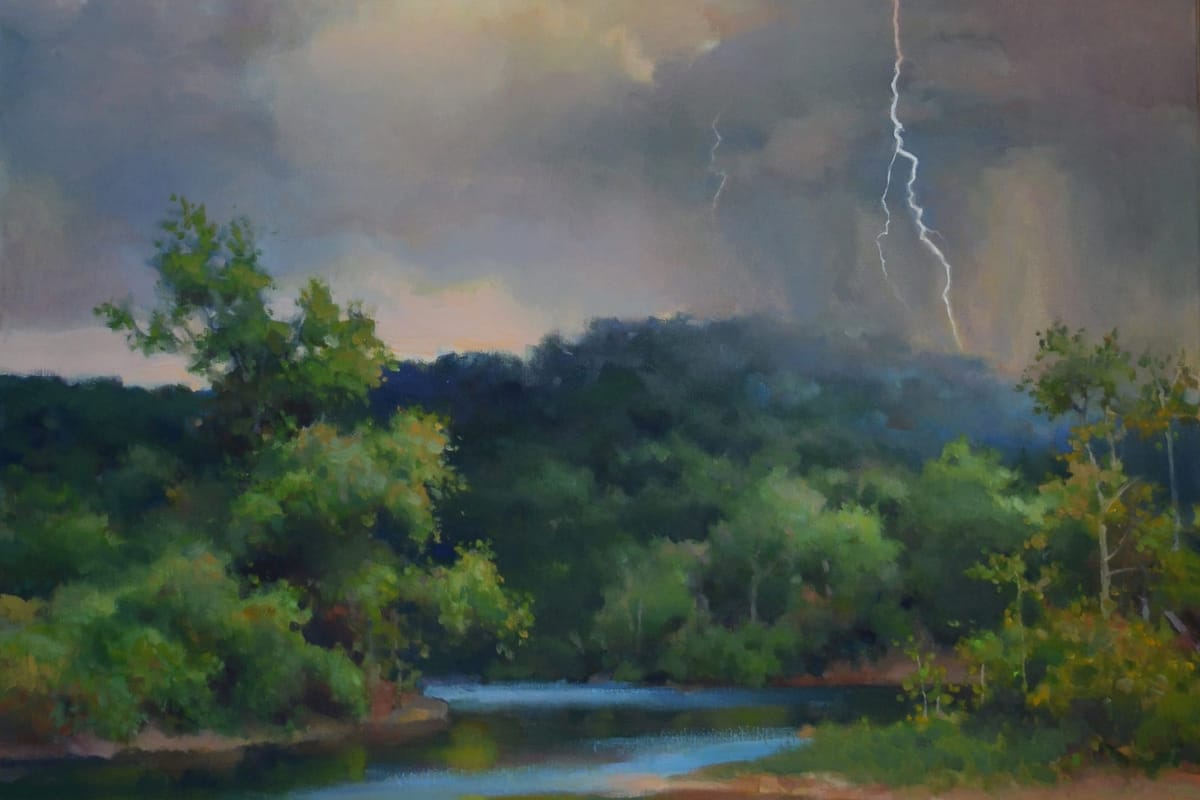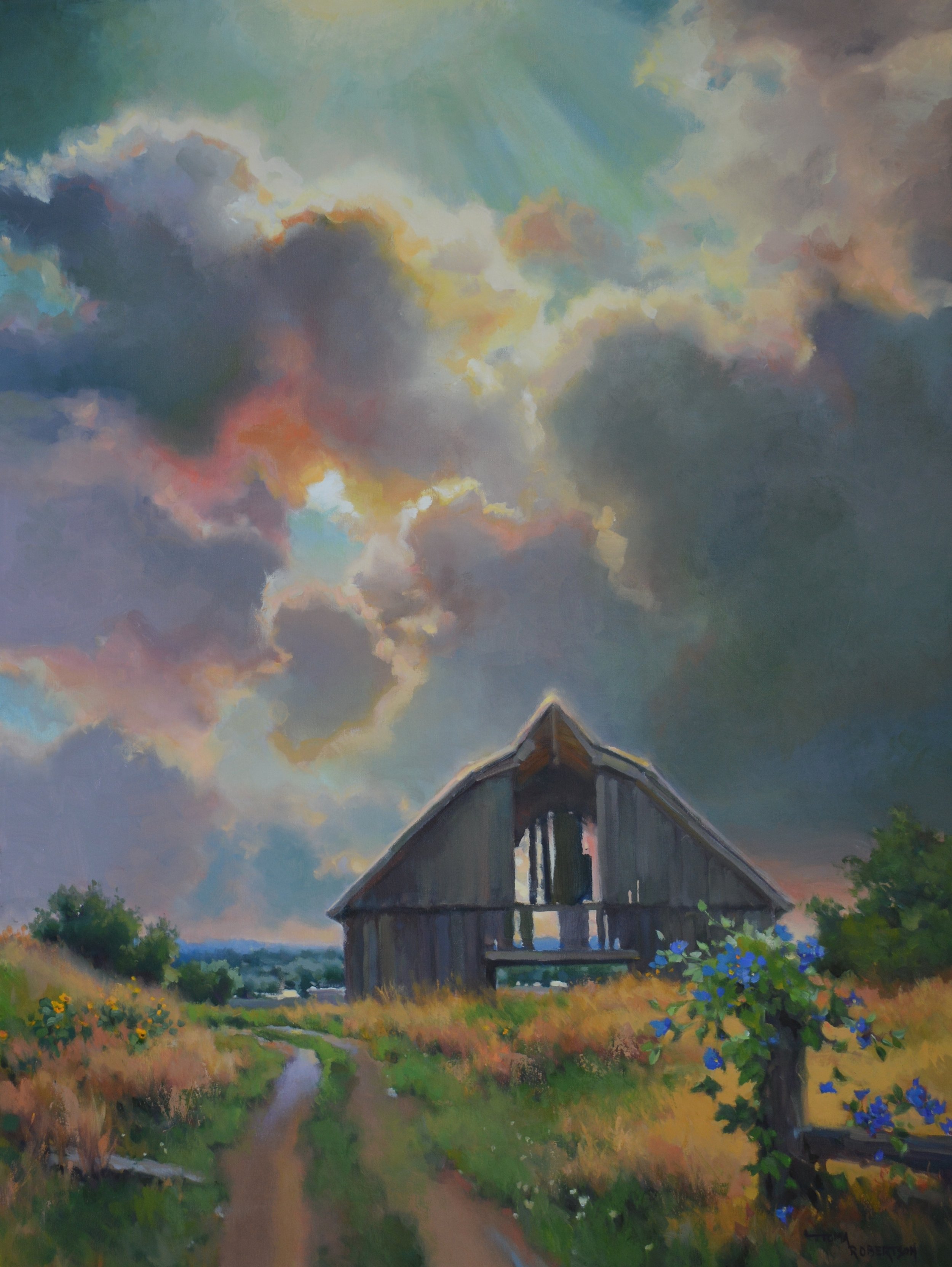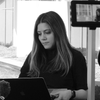
Linda Tuma Robertson won her first blue ribbon for art in kindergarten. She was an illustrator for her grade school newspaper and her high school yearbook. Gladys Whelihan, the Oklahoma City Public Schools Director of Art in the 1950s and 1960s, said, "Even in kindergarten, Linda's work showed an exceptional talent not often seen in someone so young. We were always eager to see her new works sent to the Board by her teachers. Her progression through the years was amazing."
By the time the artist was 20, her work had been displayed at the Kennedy Center in Washington, D.C., the Kerr Museum, the Oklahoma Museum of Art and the Oklahoma Art Center. Her paintings were selected for several Top 100 Arts for the Parks and Oil Painters of America national shows. She’s participated in Western Visions at the National Museum of Wildlife Art in Jackson, Wyoming, and Western Masters and The Russell Art Auction in Great Falls, Montana. The artist has been featured in Southwest Art and Western Art Collector magazines.
Her style has been described as a combination of realism and impressionism. Her love and reverence for the land inspires her to record the countryside and the vanishing wilderness of this country. We recently caught up with this captivating artist and posed a few questions of our own.
How would you describe your art? Your medium?
My paintings are a blend of realism and impressionism. I concentrate predominantly on landscapes of Oklahoma and the West, two subjects I am very familiar with.
Oils have been my medium of choice since John Shelby Metcalf, an Oklahoma artist, introduced and taught me about them when I was nine years old. I enjoy their fluidity, slow drying time and color-mixing capabilities.
Tell us about how you began your creative journey. Were you particularly encouraged by your family or teachers?
Childhood family trips west and around Oklahoma nurtured a love and intimate connection to the land and nature. These trips included visiting museums housing beautiful art, information and history. My school teachers were also instrumental in giving me a strong start in art; they were continuously giving me encouragement.
My first ribbon was in kindergarten on a work I thought I might get scolded for. We were instructed to make a line toward the top of our paper and color it in for the sky. I just couldn’t do that. The sky is definitely not like that. I drew my subject and colored the sky in around it. To my surprise, instead of getting in trouble, I got a blue ribbon. It was a lesson I use to this day: to always be true to my vision.
As a teenager, my dad and mom were always helping me with art shows and whatever was needed. At 18, I participated in my first OKC Festival of the Arts at the Civic Center. It was a big responsibility and they did most of the hard work, which I didn’t admit until years later.
My adult life has been rewarded with a supportive and loving family. My husband is always ready to help me, as are our son and daughter and two granddaughters. After my dad died in 1995, I gained a stepdad who is a very special man and a crusader for my art.
I was blessed with parents who always had time to stop and look at a rainbow. They saw my interest in art, so they provided the creative tools for me. They sought out a teacher — which was hard to find at the time. Non-objective art, the big thing in the 1960s, went with non-objective instruction. Finally, they met John Shelby Metcalf from information supplied by my school teachers; [he] could give me fundamental instruction. I took lessons every Saturday afternoon for one and a half years. It was a wonderful time.

My dad’s family came from Czechoslovakia in 1907 and settled on 250 acres to farm outside of Prague, Oklahoma. I spent countless hours exploring the beautiful, wild terrain that made up part of the farm. I used the cow trails to carry out my adventures. I confronted many different kinds of animals and reptiles, but no snakes, thank goodness. I witnessed all kinds of plants. The knowledge and inspiration I gained have been used throughout my life and in about every painting.
Tell us about your artistic process, from finding inspiration to finishing a work.
Inspiration is everywhere. When I get up in the morning the first thing I do is look out the window to see the first light of day. On good weather days, my husband helps me load my art supplies in the pickup and we head out on a road trip to discover a painting location.
It’s hard to describe all the ingredients that lead me to choose a scene. Light, color, textures, composition all play a major role. Sometimes I just get a feeling and an excitement about a certain view.
We set up my easel and I grab a small canvas, usually mounted on board. I immediately narrow down the area and plan my painting using paper and pencil sketches. When painting outside, there is no wasting time since the light, and sometimes the weather, is constantly changing.
This outdoor classroom forces me to paint efficiently and quickly and to make smart decisions. It teaches me to observe and think “art” for two to three hours. After this amount of time the light is too different. I take photos off and on during the process. When I return to the studio, I either have a completed piece, an almost completed piece, a rough study or a mess of a painting. Occasionally, bugs get stuck in the surface on the wet canvas. Some say it simply adds texture. Van Gogh experienced insects in his work; a conservator discovered a grasshopper stuck on his painting “Olive Trees.”
Painting in my studio isn’t so frantic. I have more preparation time to make sketches and small studies. Hopefully, this solid base will keep me from committing major mistakes on a large canvas. The planning and starting of the painting on canvas is a favorite time. I use the energy and information obtained from painting outdoors. I like uninterrupted time at this point. Completion of a painting is sometimes hard. I ask myself, “Have I said everything I intended to say?” I have to be careful not to overwork the painting. I like to set it aside for several days and then examine it with fresh eyes.
Tell us about your commission work.
Commission work allows me to work with families and hear their memories and see their land exclusively on a personal basis. They have deep love for their ranches and value art, so it is an especially rewarding time. The challenge is to transfer all that emotion onto the canvas and make it a good painting.
At this time I am doing a commission of a cabin in Red River, New Mexico, built in the 1960s. It is rich in memories. My husband and I have gotten to stay in the cabin several times, so it is a personal painting for me, too.
For you, what is the connection between nature, emotion, art?
I love hiking, traveling and being outdoors. These elements allow me time to study the personality of nature and develop an intimate connection with the environment. Hopefully, that will be evident in my work.
There is an excitement as I witness light, color and composition on the land. Light and color motivate mood and drama that is captivating to watch. A landscape painting is more than just mechanics. It has to reach beyond the visual and discover the soul of the area. When you give a painting soul, you transport the viewer into another dimension. It’s like in The Wizard of Oz, when Dorothy goes from black and white to a world of color.
What are the most interesting landscapes and why?
All God’s landscapes are interesting. From the plains to the mountains, all are amazing. I enjoy painting a variety of land. Variety keeps it interesting.

What’s your favorite piece you’ve created?
I keep working on creating the perfect painting that will be my favorite work. It will have the right balance of composition, color, values and a soul that speaks to everyone. It will say exactly what I envision. This probably can’t be achieved until I get to paint in the perfect world of Heaven. I am happier with the work I am doing now.
What are your plans for the future?
There is more to painting when it is a business: deadlines, inventory, shipping and packing, preparing and ordering supplies and frames, show organizing, traveling, accounting and taxes. It’s a full-time business and it is often hard to make room to be creative.
The last few years I have felt a need to slow down and give more time to just painting. I only participate in a few shows and work with the Howell Gallery in Oklahoma City. I miss the interaction with artists, collectors, show patrons and my friends at the museums, but I can give more of myself to each painting. I have time to go out and paint on location, which I enjoy immensely.
I will always paint. Artists never retire. We can’t because the powerful force of art has taken possession of us. I heard a quote one time: “To regular folks, artists are people who run away to join the circus.”
How do you define art?
Art, whether it’s visual or performing, makes life more complete and satisfying. Without art this world would be a dull existence.

